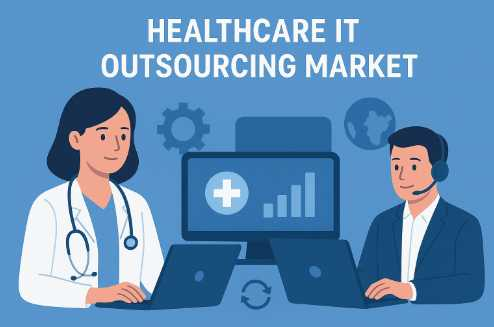Communities thrive when people come together, and few things bring a neighborhood to life like local events. From street fairs to art festivals, these gatherings offer opportunities to build connections, celebrate culture, and create lasting memories. Beyond entertainment, local events strengthen the social fabric, promote local businesses, and highlight the unique identity of a community.
This article explores the impact of local events, practical tips for organizing them, and how they contribute to the vibrancy of neighborhoods.
Why Local Events Matter
Local events do more than entertain—they build community pride and create spaces for connection. According to a study by Eventbrite, 78% of Americans say attending live events deepens their sense of connection with others. Whether it’s a small book club meeting or a large-scale festival, these gatherings foster a sense of belonging that enhances the well-being of both individuals and the community as a whole.
In addition to social benefits, local events boost the economy. Small businesses often see increased foot traffic during events, while artisans and creators have platforms to showcase their work. The ripple effect of these gatherings can revitalize neighborhoods and inspire further investment in local initiatives.
Planning Successful Local Events
Organizing a successful local event takes careful planning and collaboration. Here are some essential steps to ensure your event resonates with the community:
Understand Your Audience: Tailor the event to the interests and needs of the community. A farmers' market, for instance, may appeal to families, while a music festival might draw a younger crowd.
Engage Local Businesses: Involve shops, restaurants, and vendors to create a mutually beneficial experience.
Secure a Location: Choose a space that’s accessible, safe, and suited to the event’s size and purpose.
Promote Effectively: Use social media, community boards, and word-of-mouth to spread the word.
Incorporate Unique Features: Offer activities like workshops, live music, or food trucks to enhance the event experience.
These elements create an engaging and inclusive atmosphere, encouraging greater participation and making the event a success.
Highlighting Community Identity
Local events are an opportunity to showcase what makes a community unique. From historical landmarks to cultural traditions, these gatherings can celebrate the stories that define a neighborhood. For example, an event in New York City might spotlight its rich artistic heritage, featuring live performances, art installations, and contributions from local creatives.
Such events are also perfect opportunities to capture and preserve memories. Professional photographers often play a significant role in documenting the energy and emotion of local gatherings. A skilled NYC Wedding Photographer, for instance, might pivot their expertise to capture candid moments at a street fair or festival, immortalizing the spirit of the community.
Types of Local Events to Consider
Communities can host a variety of events to bring people together, each tailored to different interests and demographics. Some popular options include:
Farmers' Markets: Supporting local agriculture while providing fresh produce to residents.
Art Walks: Featuring local artists and galleries to celebrate creativity.
Food Festivals: Showcasing diverse culinary offerings from local vendors and chefs.
Outdoor Movie Nights: Bringing families and friends together in a relaxed setting.
Volunteer Days: Encouraging residents to work together on community improvement projects.
These events not only entertain but also contribute to a sense of unity and shared purpose.
Leveraging Technology for Community Engagement
In today’s digital age, technology plays a crucial role in organizing and promoting local events. Platforms like Meetup, Eventbrite, and Facebook Events make it easier than ever to connect with potential attendees and manage event logistics.
For example, organizers can use social media to create event pages, share updates, and encourage participation through engaging content. Additionally, tools like live streaming allow those who can’t attend in person to experience the event virtually, broadening its reach and impact.
Technology also facilitates post-event engagement. Sharing photos, videos, and highlights on social platforms keeps the conversation going and strengthens the community’s connection to the event.
The Long-Term Impact of Local Events
The benefits of local events extend far beyond the day of the gathering. They leave lasting impressions on attendees, foster relationships, and inspire future initiatives. Over time, these gatherings can transform neighborhoods into vibrant hubs of activity and culture.
Communities that prioritize regular events often see increased civic engagement, as residents feel more connected and invested in their surroundings. This engagement can lead to further improvements in public spaces, greater support for local businesses, and a stronger sense of pride in the neighborhood.
Overcoming Challenges in Event Planning
While local events have many benefits, organizing them can come with challenges. Common obstacles include securing funding, coordinating logistics, and ensuring accessibility for all residents. To address these issues, consider:
Seeking Sponsorships: Partner with local businesses or organizations to share costs and resources.
Building a Volunteer Network: Engage community members to assist with setup, operations, and cleanup.
Focusing on Inclusivity: Design events that are accessible to people of all ages, abilities, and backgrounds.
By addressing these challenges proactively, communities can create events that are both impactful and sustainable.
Conclusion
Local events are the lifeblood of thriving communities, fostering connection, celebrating culture, and driving economic growth. From small neighborhood gatherings to large-scale festivals, these events create opportunities for residents to come together and build lasting relationships.
As technology and creativity continue to shape the way we connect, local events will remain an essential part of community life. Whether it’s through organizing an art walk, hosting a food festival, or capturing the energy of the moment with an NYC Wedding Photographer, there are countless ways to contribute to the vibrancy and resilience of a community. Together, these efforts create a shared sense of purpose and pride that strengthens neighborhoods and enriches lives.


















